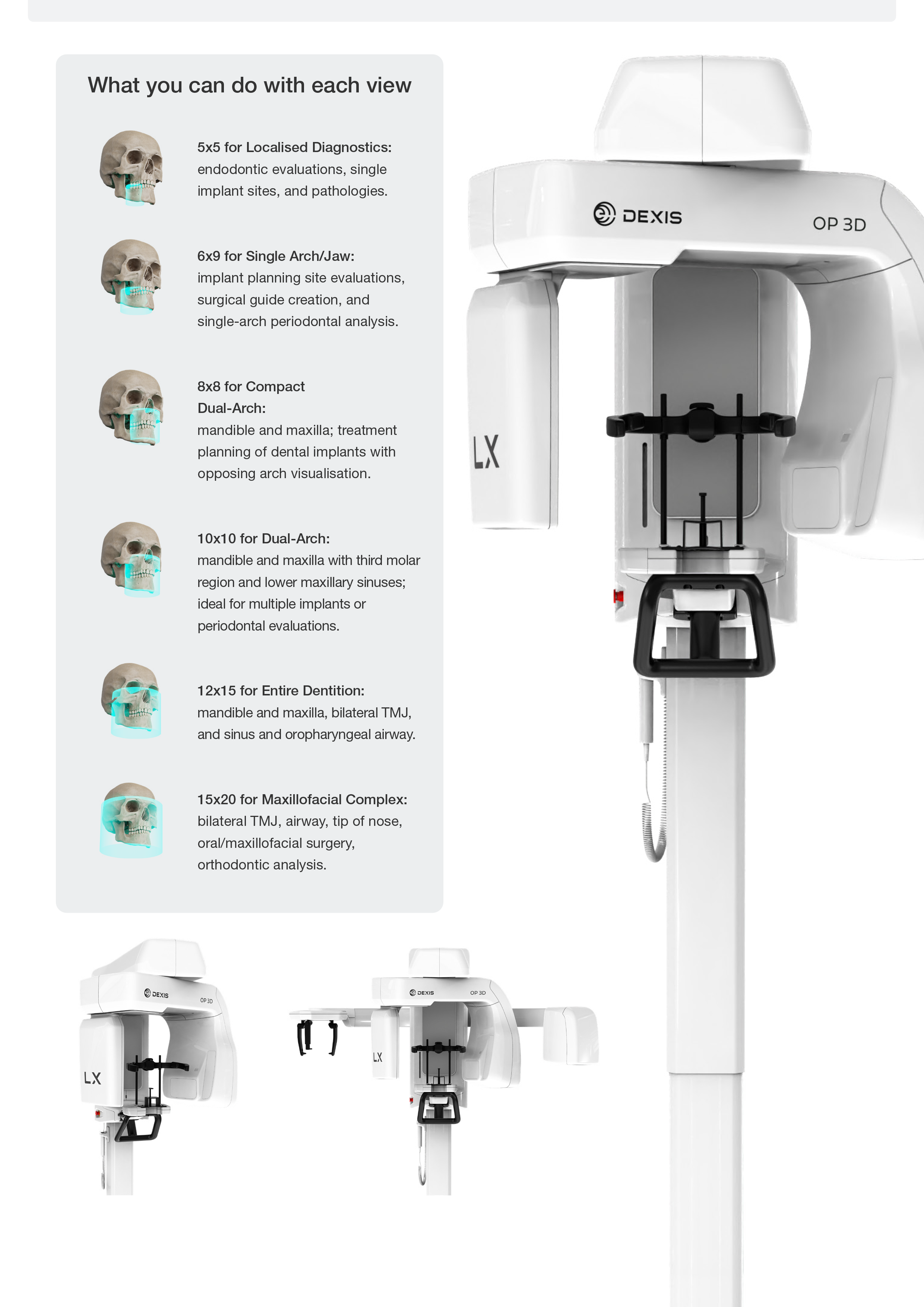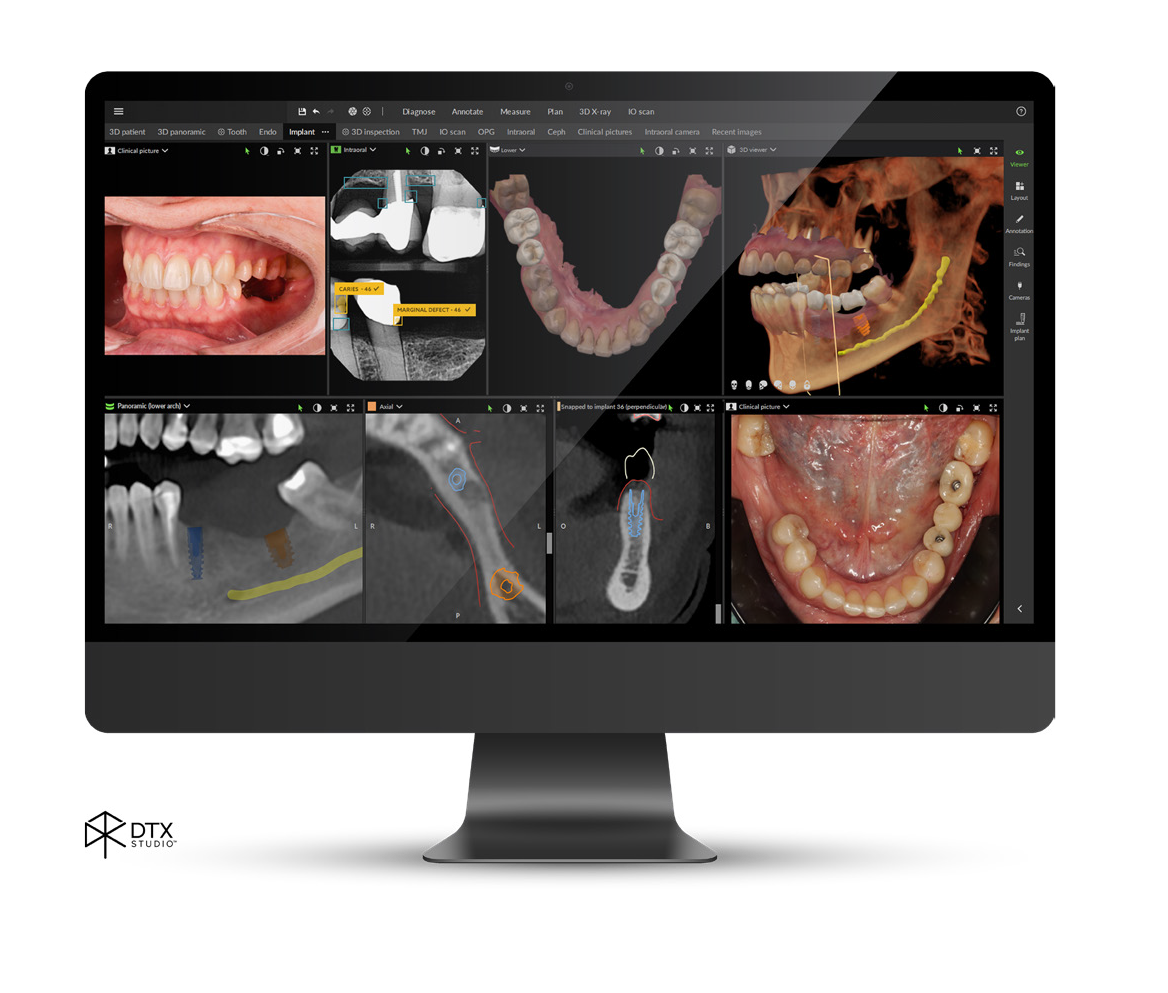
3D imaging is opening up new possibilities in the quality of care delivered at dental practices nationwide. With this technology, dentists have access to clear, high-resolution scans that show a level of detail not possible with 2D systems, allowing for more accurate diagnoses and better treatment planning—ultimately elevating patient care.
3D technology is the gateway to perform in-house services such as implants, endodontics, orthodontics, airway analysis, and more, enabling the general practice to offer more procedures so that it can provide the best-possible patient experience.
The Complete X-Ray Platform
Designed for advanced imaging needs, the OP 3D features four resolutions for 3D (Low Dose Technology™, Standard, High, and Endo) and an edge-preserving noise reduction (EPNR) that softens soft-tissue noise patterns while retaining sharp edges, improved bitewing view, and a next-generation focusing technology that helps to ensure that the focal layer is aligned for each patient and their specific anatomy. These, along with the existing automated metal artifact reduction (MAR) function, work together to adapt to the ever-changing practice needs. It also comes with four predefined volumes that are freely positionable and height adjustable, for a total of 36 possible FOV sizes. The platform is designed to increase practice efficiency, with fast scan times and 3D programs for general dentists and specialists.
The Benefits of Cone Beam Imaging
Beyond the advantages of improved diagnostics and treatment planning, adding CBCT imaging also gives your practice an edge over others that don’t use 3D imaging or that send patients to another site for image capture. Patients appreciate the convenience of taking the scans in your office. Many are impressed with the technology and the level of detail it provides—creating the opportunity for enhanced patient education and treatment acceptance. If you’re not ready for 3D just yet, you can take the first step by investing in the OP 3D upgradable panoramic. This system can grow with your practice, allowing you to easily add cephalometric and/or 3D capabilities when it makes the most sense. The configurable device platform has options for 2D panoramic; panoramic with cephalometric; panoramic with 3D imaging; and panoramic with cephalometric and 3D imaging.
Introducing the DEXIS OP 3D LX
Now, the next generation of DEXIS cone beam technology is here. Built on OP 3D technology, this multimodality imaging platform expands your 3D diagnostic capabilities with a wide range of clinical applications that support your evolving practice and enhance diagnostic confidence.
Flexible Fields of View
Featuring an optional 15x20 field of view—the largest view option available on a DEXIS OP 3D platform to date—and 5 other FOVs, OP 3D LX offers high-resolution scans and shorter scan times while capturing the maxillofacial complex and large diagnostic areas in one non-stitched scan. OP 3D LX features 96 additional customisable FOV options, along with 4 resolutions, including endo and low dose modes. In addition to panoramic, extraoral bitewing, and 3D imaging, OP 3D LX offers an optional cephalometric modality, as well as a host of implant planning tools and noise reduction filters embedded into the system software that minimise artifacts and noise.


Powerhouse Imaging
DTX Studio™ Clinic software streamlines the digital diagnostic and treatment planning process while seamlessly integrating with your existing imaging hardware and fostering clinical collaboration throughout your office and beyond. From image acquisition to diagnostics and treatment planning, DTX Studio Clinic brings all your x-rays, photos, 2D and 3D, extraoral and intraoral imaging formats into one clear, comprehensive view.

Here are 5 ways DTX Studio Clinic takes 3D imaging to a new level:
- SmartFusion™ is the intelligent way of directly combining surface models from all intraoral and desktop scanners with any CBCT scan using proprietary voxel-based algorithms— for accurate information of surfaces and underlying anatomy in 3D.
- SmartFocus™ uses tooth positions as your reference. You can browse across your various patient images from different devices and sessions with just one click.
- DTX Studio Implant allows you to plan implants for major implant systems according to the patient’s anatomy and prosthetic requirements during the first visit. You can turn the plan into reality by using a surgical template or 3D-navigated implant surgery.
- DTX Studio Lab brings labs and clinicians together from treatment planning to final restoration.
- DTX Studio Go connects you to labs and other service providers in your area. For example, it’s easy to outsource implant planning with a connected clinician using the DTX Studio suite, or to order a prosthetic restoration or a TempShell at a connected lab.